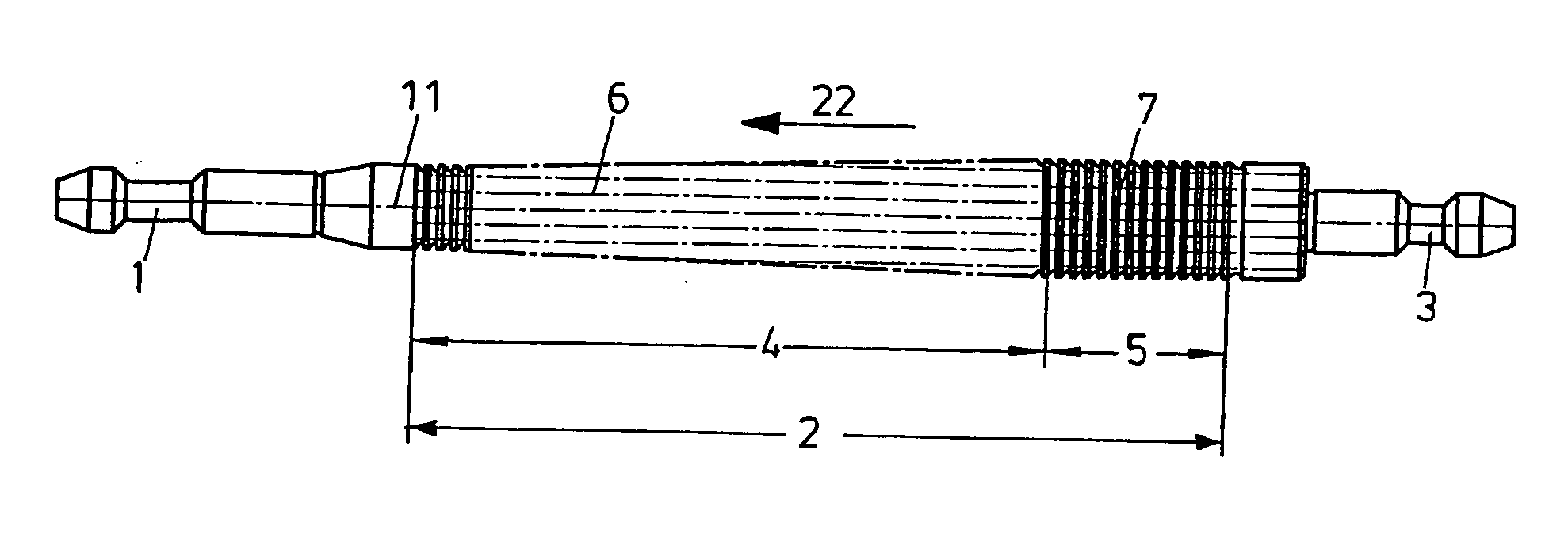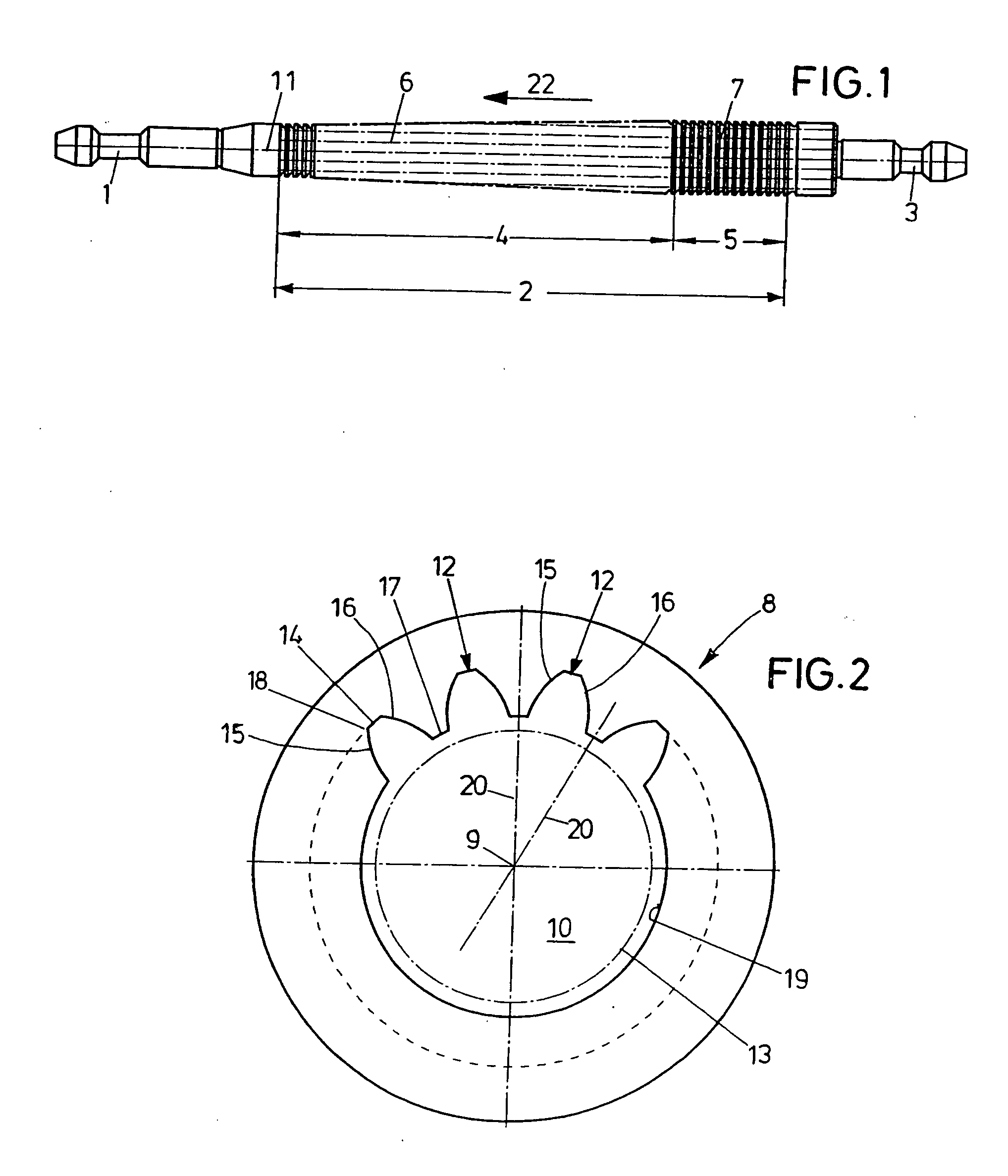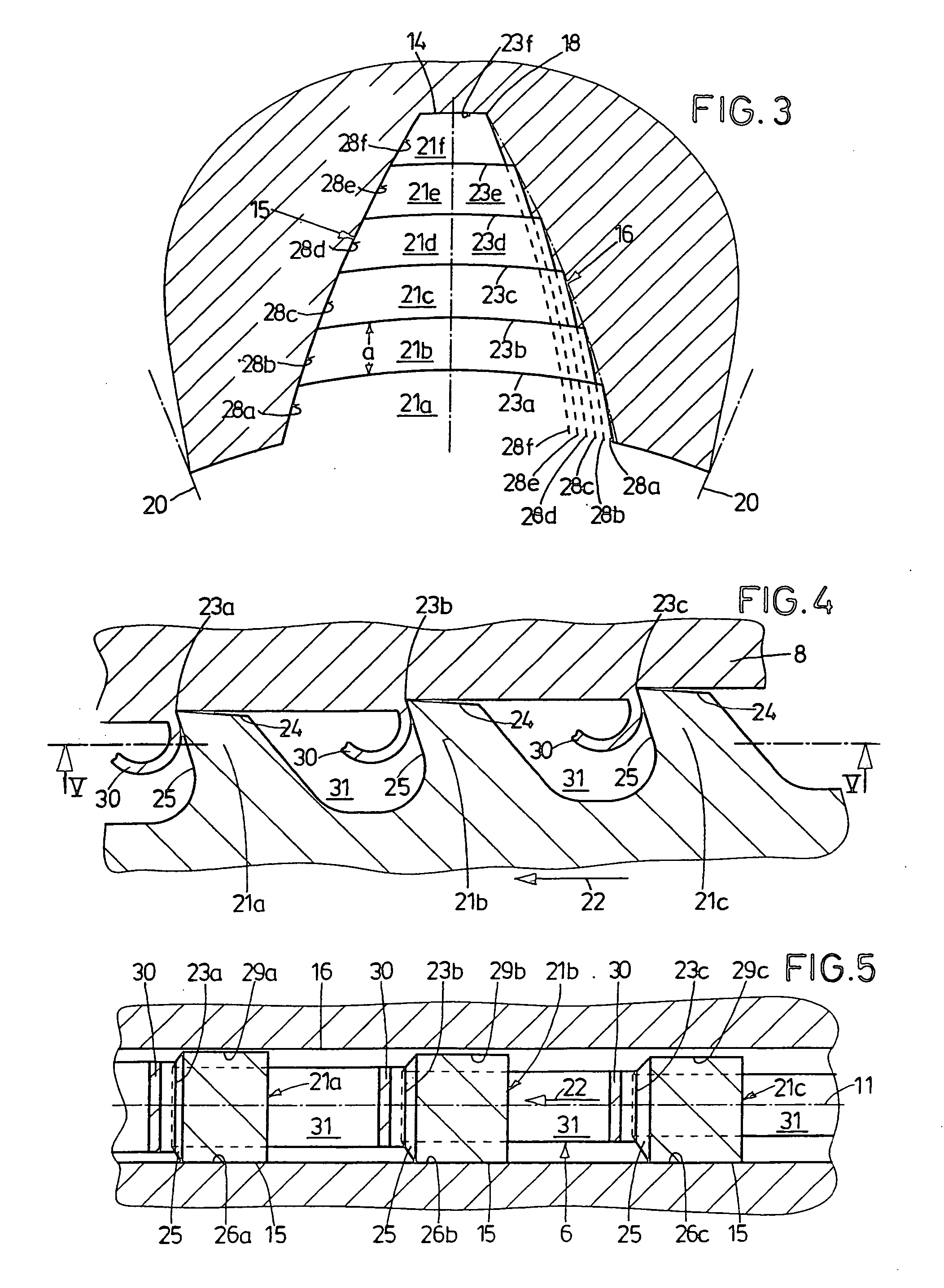Internal broach
a broach and internal technology, applied in the field of internal broaches, can solve the problems of insufficient profile accuracy and flank surface quality, negative influence of flank curve accuracy, and considerable drawbacks
- Summary
- Abstract
- Description
- Claims
- Application Information
AI Technical Summary
Benefits of technology
Problems solved by technology
Method used
Image
Examples
Embodiment Construction
[0030] The internal broach seen in FIG. 1, the fundamental structure of which is familiar, comprises a shank 1, a toothed section 2 and a tail end 3 subsequent thereto. The toothed section 2 includes a broaching portion 4 subsequent to the shank 1 and an adjoining sizing portion 5 upstream of the tail end 3. The broaching portion 4 has several rows 6 of broach cutting teeth that will be explained below. The sizing portion 5 also includes a number of rows 7 of sizing teeth.
[0031] The broach serves to machine for instance an annular work piece 8 which is illustrated in FIG. 2. Prior to being broached, it has a borehole 10 concentric of the central longitudinal axis 9 of the finished work piece 8. The work piece 8 is placed on a work piece support of an internal broaching machine; then the shank 1 of the broach is led through the borehole 10 and seized by a puller of the broaching machine, the puller being drivable in the direction of the axis 11 of the broach, drawing the broach throu...
PUM
| Property | Measurement | Unit |
|---|---|---|
| thickness | aaaaa | aaaaa |
| depth | aaaaa | aaaaa |
| width | aaaaa | aaaaa |
Abstract
Description
Claims
Application Information
 Login to View More
Login to View More - R&D
- Intellectual Property
- Life Sciences
- Materials
- Tech Scout
- Unparalleled Data Quality
- Higher Quality Content
- 60% Fewer Hallucinations
Browse by: Latest US Patents, China's latest patents, Technical Efficacy Thesaurus, Application Domain, Technology Topic, Popular Technical Reports.
© 2025 PatSnap. All rights reserved.Legal|Privacy policy|Modern Slavery Act Transparency Statement|Sitemap|About US| Contact US: help@patsnap.com



